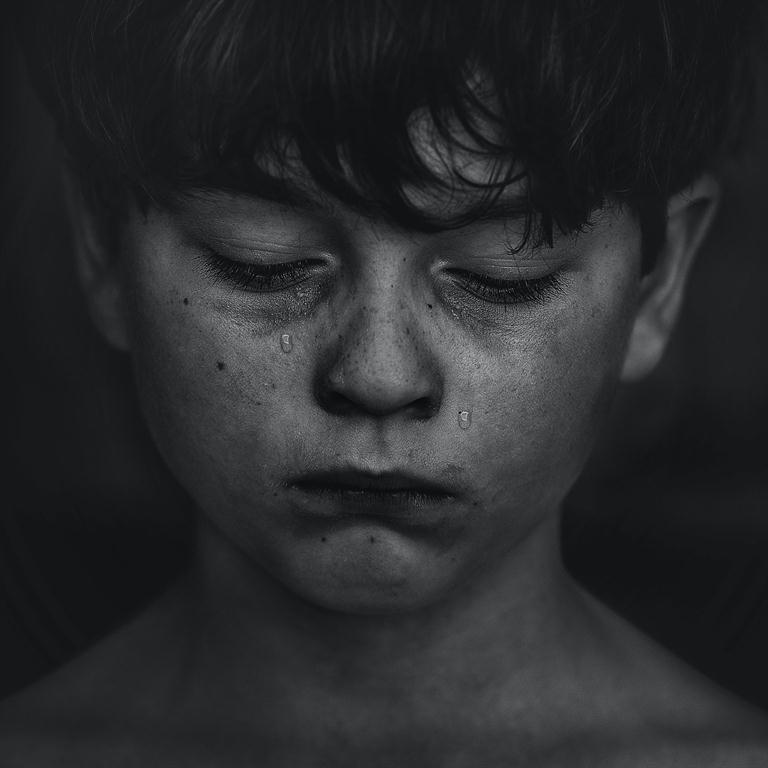Economic and epidemiological impact of youth suicide
Almost 7 000 young lives are lost each year to suicide representing a loss of 406 730 years of life at a cost of over US$5.53 billion.
Globally, suicide is the second most common cause of death, after road traffic accidents, among young people aged between 15–24 years. A growing evidence base suggests that engaging in self-harm is the strongest predictor of future suicidal behaviour. However, limited data exist on the extent of suicide attempts and suicidal ideation.
In a recent review of suicide prevention strategies, Zalsman et al (2017) find that there is now strong evidence to suggest that restricting access to lethal means can prevent suicide and that school-based awareness programmes play a role in reducing suicide attempts and ideation. However, the authors also note that in the quest for effective suicide prevention initiatives, no single strategy clearly stands above the others and data suggest that each specific risk group might need a tailored preventive approach.
Adolescence and young adulthood is a clear example of a vulnerable group that requires special attention. Evidence suggests that risks of suicidal behaviour increase among this age group with epidemiological data clearly showing that suicide is a now a major cause of death and disability.
In addition to the accumulating evidence on youth suicide and self-harm morbidity and premature mortality, there is a growing recognition of making an economic case for investing in youth suicide prevention. Economic evidence can play a pivotal role in health policy in low, middle and high income country contexts. Such evidence can assist public health-care decision-makers to understand the magnitude of adverse outcomes associated with suicide and the potential benefits to be achieved by investing in effective strategies to address suicidal behaviour. Although there has been several attempts at costing suicide at the population or workplace level, there is a paucity of research examining the economic impact of youth suicide. Weinstein and Saturno (1989) reported the economic cost of youth suicide in the United States at US$2.26 billion, Platt et al (2006) calculated the lifetime costs of completed suicide for young people in Scotland at £9.75 million; Kinchin and Doran (2018) estimated the total economic loss of youth suicide in Australia at $AUD511 million.
A number of socio-economic indicators, including suicide rates, alcohol consumption and divorce rates, are known to be more common in more equal income countries. Yet, these trends are not well known and largely unanalysed.
The impact of youth suicide is measured using years of life lost (YLL), years of productive life lost (YPLL) and the economic value of lost productivity.
In the absence of country-specific age data on suicide mortality rates, the average age of a death by suicide is assumed to be 19.5 years, the mid-point of the 15–24 age bracket. Evidence suggests that a mental illness reduces an individual’s capacity to work, whether temporarily or permanently, with economic output correspondingly reduced.
Even the most developed nations are not immune from the impact of suicide. In 2014, an estimated 6 912 young people living in the most developed countries in the world lost their lives to suicide. These preventable deaths resulted in a loss of 406 730 years of life and 161 349 years of productive life, adjusted for employment potential. The present value of lost earning potential due to youth suicide in these countries is estimated at US$5.534 billion. The burden of suicide in the United States for example far exceeds any other country at an estimated 296 893 Years of Life Lost (YLL), 123 003 adjusted PYLL and a present value of total earnings foregone at US$4.26 billion in (2014 International dollars). The countries with the next highest burden are Canada (31 941 YLL, 12 072 adjusted PYLL and lost earnings of $408 million, Germany (31 373 YLL, 10 418 adjusted PYLL and lost earnings of US$357 million) and Australia (22 730 YLL, 7 280 adjusted PYLL and lost earnings of US$183 million).
The estimated average cost of suicide across all countries is estimated at US$802 939, ranging from US$501 169 in Australia to US$1 747 170 in Singapore. Variations in cost per suicide per country reflect variations in adjusted GDP per capita, growth rates and real interest rates. The estimated average cost of suicide across all countries at baseline is estimated at U$802 939.
The United States stands out as a country with the most significant youth suicide problem. It has one of the highest crude suicide mortality rates (both male and female) and the greatest number of youth suicide deaths of any country, namely 5 120. The present value of lost earning potential due to youth suicide in the United States is estimated at US$4.26 billion, representing 77% of total value from the top ten ranked countries.
Youth suicide rates are unacceptable, particularly given suicide is preventable. The World Health Organisation’s mental health action plan has set the goal of reducing the rate of suicide in countries by 10% by 2020. A systems-based approach to suicide prevention was recently proposed in Australia that builds on nine strategies, including aftercare and crisis care; psychological and pharmacotherapy treatments; building the capacity and support of general practice teams; frontline staff training; gatekeeper training; school programs; community campaigns; media guidelines; and means restriction, which when implemented within a specific community at the same time are likely to lead to suicide reduction. Although the effectiveness of this approach is yet to be established, findings suggest that the impact of meeting a 10% reduction in youth suicide would avert 691 deaths, 40 673 years of life lost and save U$553 million in foregone earnings. These savings would more than offset any investment in suicide prevention. - Source: https://journals.plos.org/
In a recent review of suicide prevention strategies, Zalsman et al (2017) find that there is now strong evidence to suggest that restricting access to lethal means can prevent suicide and that school-based awareness programmes play a role in reducing suicide attempts and ideation. However, the authors also note that in the quest for effective suicide prevention initiatives, no single strategy clearly stands above the others and data suggest that each specific risk group might need a tailored preventive approach.
Adolescence and young adulthood is a clear example of a vulnerable group that requires special attention. Evidence suggests that risks of suicidal behaviour increase among this age group with epidemiological data clearly showing that suicide is a now a major cause of death and disability.
In addition to the accumulating evidence on youth suicide and self-harm morbidity and premature mortality, there is a growing recognition of making an economic case for investing in youth suicide prevention. Economic evidence can play a pivotal role in health policy in low, middle and high income country contexts. Such evidence can assist public health-care decision-makers to understand the magnitude of adverse outcomes associated with suicide and the potential benefits to be achieved by investing in effective strategies to address suicidal behaviour. Although there has been several attempts at costing suicide at the population or workplace level, there is a paucity of research examining the economic impact of youth suicide. Weinstein and Saturno (1989) reported the economic cost of youth suicide in the United States at US$2.26 billion, Platt et al (2006) calculated the lifetime costs of completed suicide for young people in Scotland at £9.75 million; Kinchin and Doran (2018) estimated the total economic loss of youth suicide in Australia at $AUD511 million.
A number of socio-economic indicators, including suicide rates, alcohol consumption and divorce rates, are known to be more common in more equal income countries. Yet, these trends are not well known and largely unanalysed.
The impact of youth suicide is measured using years of life lost (YLL), years of productive life lost (YPLL) and the economic value of lost productivity.
In the absence of country-specific age data on suicide mortality rates, the average age of a death by suicide is assumed to be 19.5 years, the mid-point of the 15–24 age bracket. Evidence suggests that a mental illness reduces an individual’s capacity to work, whether temporarily or permanently, with economic output correspondingly reduced.
Even the most developed nations are not immune from the impact of suicide. In 2014, an estimated 6 912 young people living in the most developed countries in the world lost their lives to suicide. These preventable deaths resulted in a loss of 406 730 years of life and 161 349 years of productive life, adjusted for employment potential. The present value of lost earning potential due to youth suicide in these countries is estimated at US$5.534 billion. The burden of suicide in the United States for example far exceeds any other country at an estimated 296 893 Years of Life Lost (YLL), 123 003 adjusted PYLL and a present value of total earnings foregone at US$4.26 billion in (2014 International dollars). The countries with the next highest burden are Canada (31 941 YLL, 12 072 adjusted PYLL and lost earnings of $408 million, Germany (31 373 YLL, 10 418 adjusted PYLL and lost earnings of US$357 million) and Australia (22 730 YLL, 7 280 adjusted PYLL and lost earnings of US$183 million).
The estimated average cost of suicide across all countries is estimated at US$802 939, ranging from US$501 169 in Australia to US$1 747 170 in Singapore. Variations in cost per suicide per country reflect variations in adjusted GDP per capita, growth rates and real interest rates. The estimated average cost of suicide across all countries at baseline is estimated at U$802 939.
The United States stands out as a country with the most significant youth suicide problem. It has one of the highest crude suicide mortality rates (both male and female) and the greatest number of youth suicide deaths of any country, namely 5 120. The present value of lost earning potential due to youth suicide in the United States is estimated at US$4.26 billion, representing 77% of total value from the top ten ranked countries.
Youth suicide rates are unacceptable, particularly given suicide is preventable. The World Health Organisation’s mental health action plan has set the goal of reducing the rate of suicide in countries by 10% by 2020. A systems-based approach to suicide prevention was recently proposed in Australia that builds on nine strategies, including aftercare and crisis care; psychological and pharmacotherapy treatments; building the capacity and support of general practice teams; frontline staff training; gatekeeper training; school programs; community campaigns; media guidelines; and means restriction, which when implemented within a specific community at the same time are likely to lead to suicide reduction. Although the effectiveness of this approach is yet to be established, findings suggest that the impact of meeting a 10% reduction in youth suicide would avert 691 deaths, 40 673 years of life lost and save U$553 million in foregone earnings. These savings would more than offset any investment in suicide prevention. - Source: https://journals.plos.org/







Comments
Namibian Sun
No comments have been left on this article